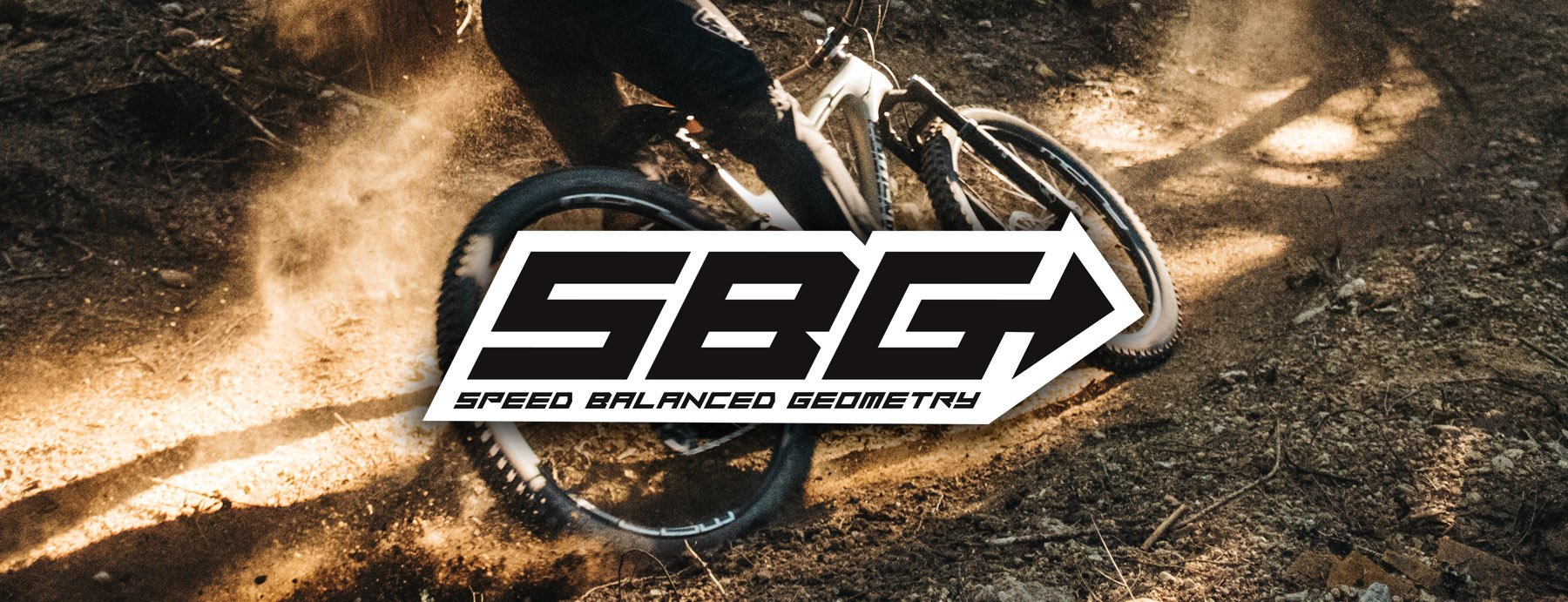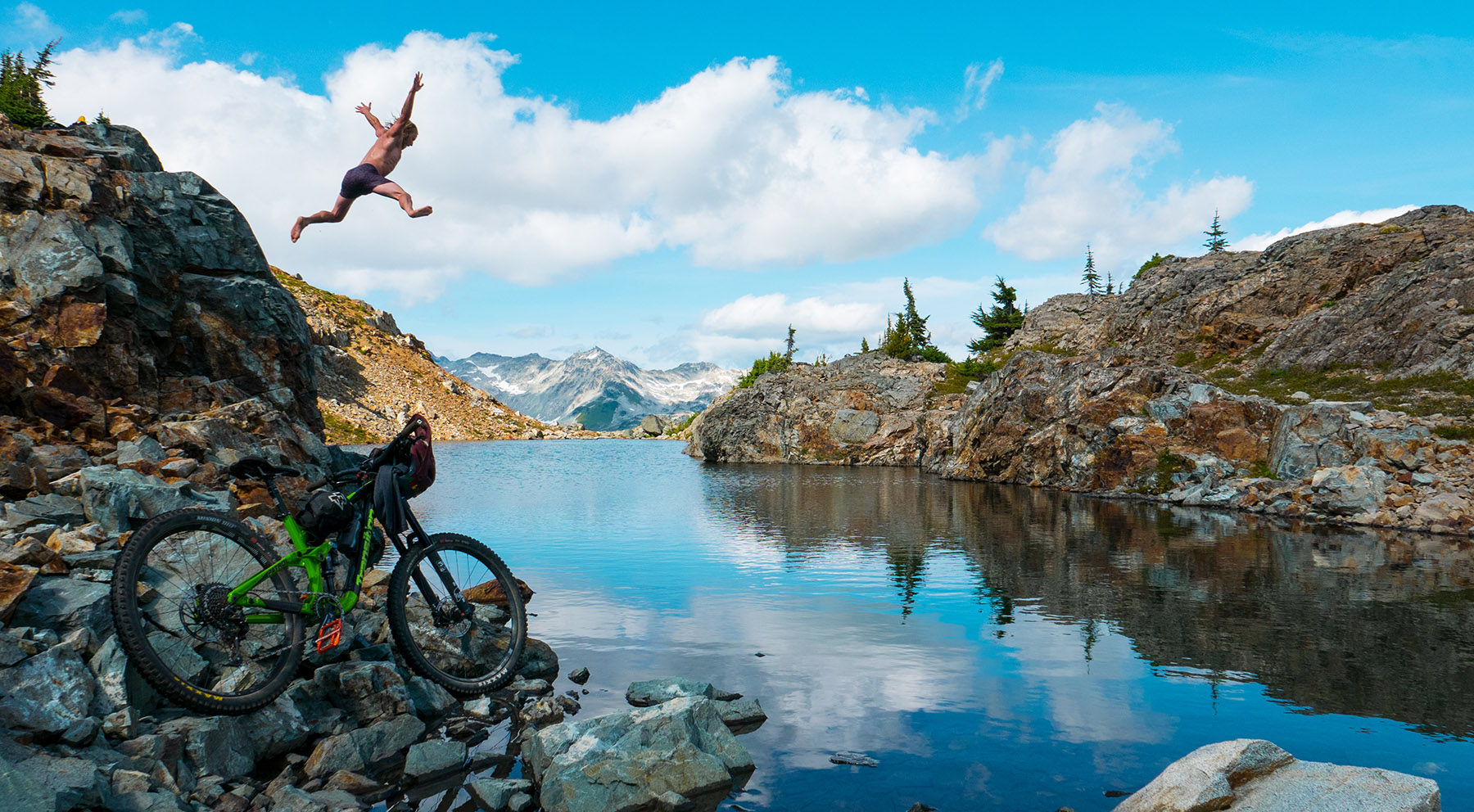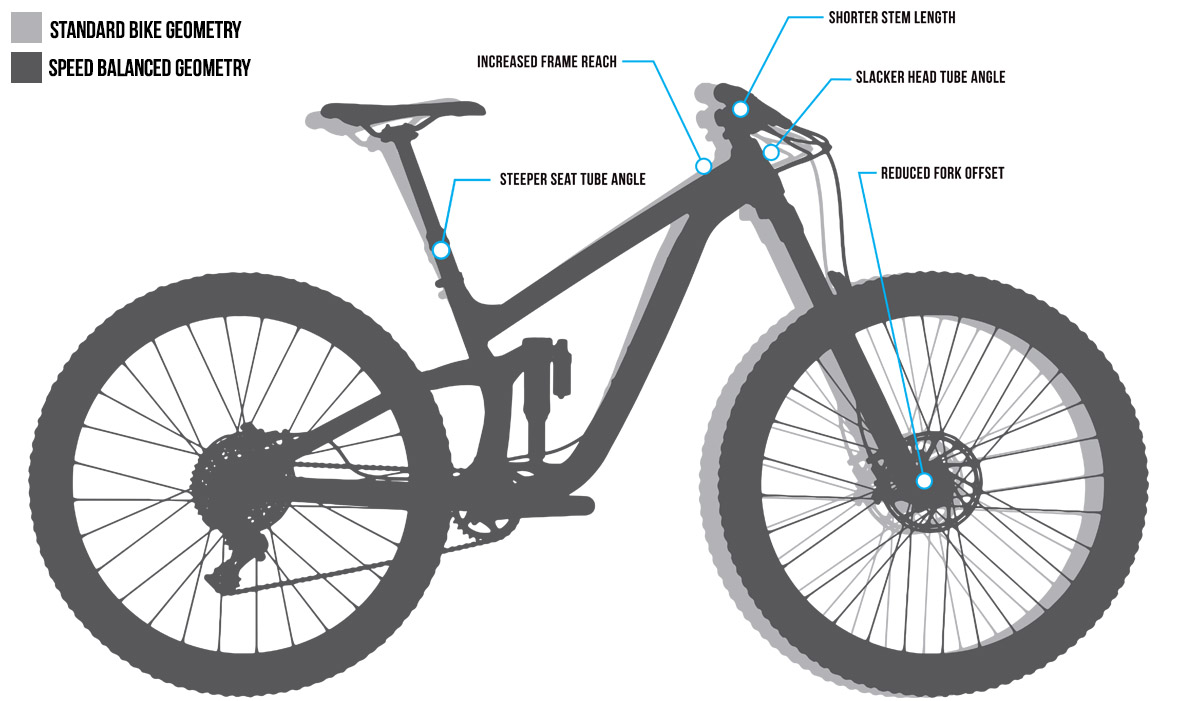

 |
A Holistic Approach To Mountain Bike Geometry What is it about the human connection to the bicycle that brings us so much joy? How can such a simple mechanical device mean so much to so many of us? What if it was possible to heighten that connection? What would it take, what would it mean and how would you achieve it? 
Imagine a dream where you could ride without thinking about what your front wheel is doing. You stopped having conscious thought about whether it had traction or not, instead you just intuitively knew. In this same dream your bike could do exactly what you wanted it to at whatever speed your were moving. At high speeds it carved stable turns with supreme grip, and at slow speeds it was nimble and precise to maneuver tight turns. This was our dream. In the search for a better handling bike, we started by asking some simple questions. Why are mountain bikes becoming longer and slacker? The obvious answer is stability. Why is this good? It makes the rider feel safer and creates a more stable chassis at higher speeds or steeper terrain. Longer and slacker comes at a cost however, and that cost is realized at slower speeds or flatter terrain where the front wheel is too far ahead of the rider. This inhibits the rider's ability to properly weight the front wheel. What if it were possible to have a mountain bike that did all of this extremely well without compromising? bal•ance noun 1. an even distribution of weight enabling someone or something to remain upright and steady. "slipping in the mud but keeping their balance" Inspired by this dream, late in 2015 we initiated a research program led by our Product Development Team to discover ways we could make our current bikes handle even better. We began an extensive test cycle with different variations of fork offset and geometries. Why you ask? In the last 5 years, your mountain bike has changed in in many ways. Your wheels have likely gotten bigger. Your frame has gotten longer. Your head tube has gotten slacker. Your suspension has improved. Your stem has gotten shorter and your bars have gotten wider. And you likely have a remote dropper seat post opposed to a straight post. Your components have improved in ways that have allowed you to ride easier, farther and harder. Yet, the there are some things that haven't been updated with the rest of these improvements. One of these things is steering trail. Trail is one of the dimensions that relates to particular steering feel and handling characteristics. Current trail figures fall between a regular set of parameters depending on wheel size and bike suspension travel. The thing is, this range of trail is based on an old legacy of 26" bikes with outdated geometry; steep head tube angles, shorter reach and top tube, longer stems and skinnier handlebars. Why shouldn't this evolve with the rest of your bike? The Tech FRAME SIZING Our SBG system utilizes frame reach measurements that are longer than our current models. The SBG system is designed to be used with a 40mm stem, which equates to a modest total increase in reach when compared to our current models which use 50mm stems. Our SBG system additionally includes steeper seat tube angles which aid in climbing traction and reduce seated sag when climbing. These two changes bring the rider more forward in the chassis into a more central location between the front and rear tire contact patches, which greatly increases traction. HEAD TUBE ANGLE SBG integrates slacker headtube angles which allow the fork to absorb impacts better on all angles, and positions the front wheel further forward in relation to the handlebars. As you approach obstacles in the trail a steeper head tube angle has a more vertical suspension path. This reduces the forks ability to properly absorb impacts and generates deflection. A slacker headtube angle positions the fork at a better angle of approach to absorb impacts which reduces deflection. Additionally, slacker headtube angles reduce dive while increasing rear wheel grip under heavy braking. FORK OFFSET SBG is designed to be used with a fork offset that is shorter than traditionally used per wheel size. The shorter fork offset brings the front axle more rearward and under the rider which further increases front tire traction. This works in unison with the shorter stem length to provide a more direct steering input and dramatically enhances connectivity to what is happening with the front wheel. The shorter offset also brings the front wheel more under the rider which balances the effects of a slacker head angle. Our SBG system creates a longer trail figure than standard, used in a way that eliminates the negative side effects. 
BEHIND THE BIKES, A LABOR OF LOVE |
 |